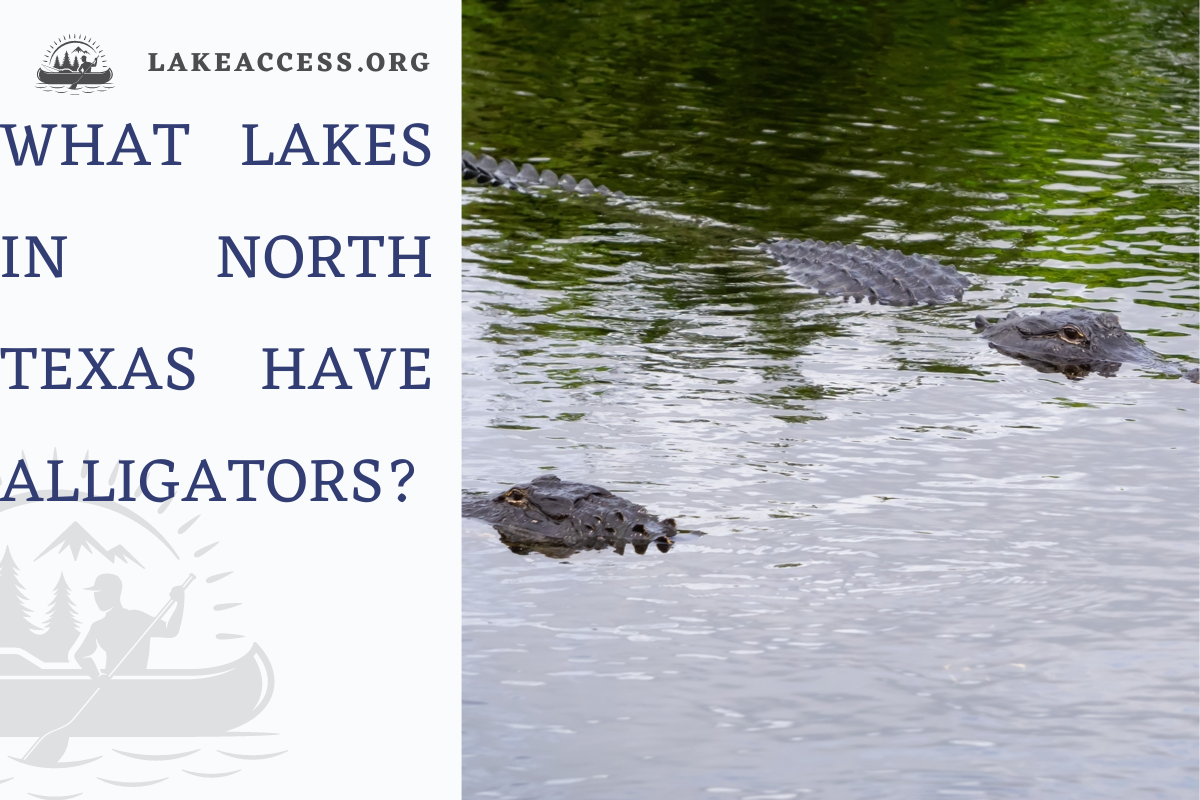When you think of Texas, you might picture vast deserts and cattle ranches, but did you know that the Lone Star State is also home to alligator-infested lakes? In North Texas, several lakes harbor these ancient reptiles, adding a unique aspect to the region’s ecosystem. In this article, we’ll explore the history of alligators in Texas, why they thrive in these waters, and, most importantly, how to stay safe when encountering them.
Alligator-Infested Lakes in North Texas
Several lakes in North Texas are known for their resident alligator populations. These include:
- Lake Lewisville (Denton County)
- Lake Worth (Tarrant County)
- Eagle Mountain Lake (Tarrant County)
- Lake Tawakoni (Hunt County)
- Caddo Lake (Marion County)
- Lake Travis (Travis County)
- Lake Livingston (Polk County)
These lakes offer diverse recreational activities but also host North America’s native reptile, the American Alligator (Alligator mississippiensis). While these alligators usually remain hidden beneath the water’s surface, sightings are not uncommon. Therefore, it’s essential to exercise caution when visiting these picturesque North Texas lakes.
1. Lake Lewisville – Denton County’s Alligator Haven
Lake Lewisville, nestled in Denton County, is known as an alligator haven in North Texas. With an extensive shoreline, this lake provides a favorable habitat for alligators. While enjoying various recreational activities like swimming, boating, and fishing at Lake Lewisville, visitors may come across these ancient reptiles. Although alligator sightings are relatively common, these creatures seldom pose a threat to humans. Texas Parks and Wildlife monitors the alligator population here, ensuring a safe coexistence between humans and alligators.
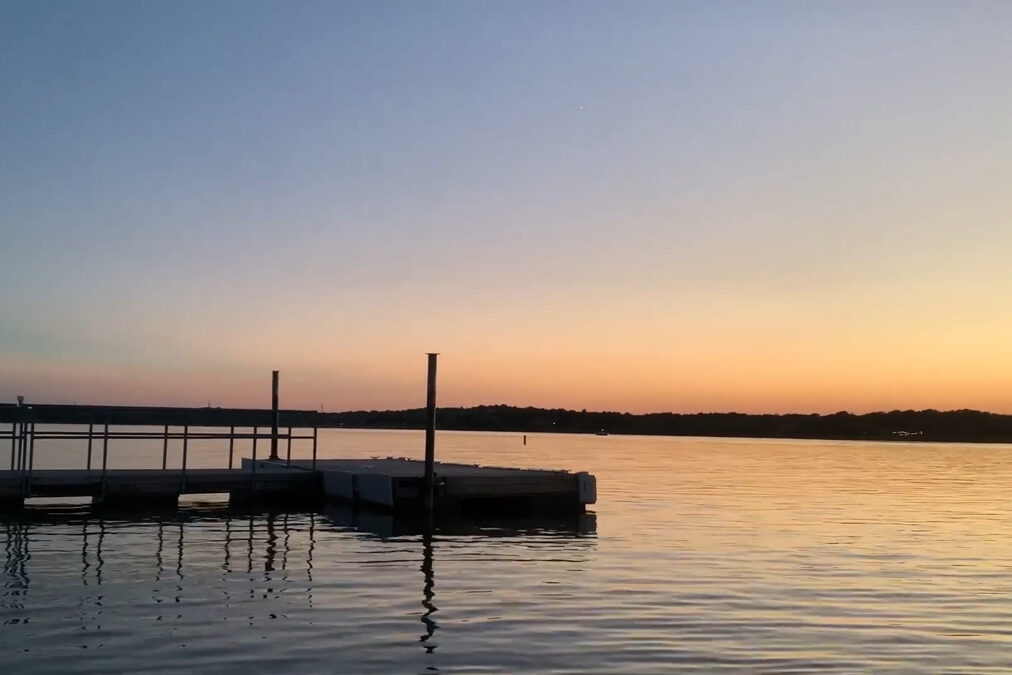
2. Lake Worth – Tarrant County’s Hidden Alligator Gem
Lake Worth, situated in Tarrant County, is another location where alligators call home. These reptiles are a natural part of the North Texas ecosystem, preferring the quiet waters and marshy areas. Lake Worth’s abundant wildlife and proximity to the Trinity River make it an ideal habitat for alligators. While enjoying the lake’s recreational offerings, such as boating and picnicking, visitors should remain cautious of potential alligator sightings. Observing these creatures in their natural habitat can be fascinating, but it’s crucial to respect their space and report any concerns to Texas Parks and Wildlife.
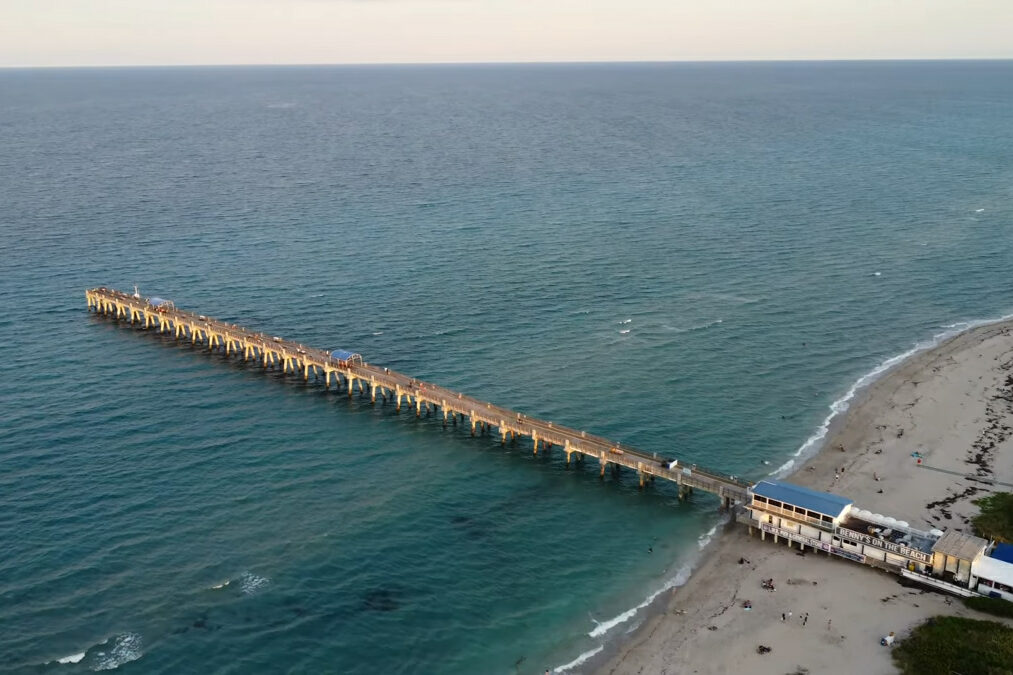
3. Eagle Mountain Lake – Tarrant County’s Alligator Retreat
Eagle Mountain Lake, located in Tarrant County, serves as a retreat for alligators in North Texas. Anglers and outdoor enthusiasts frequent this lake for bass fishing and water sports. It’s not uncommon to spot alligators in its marshy areas, especially near the Trinity River. While alligators are generally reclusive and avoid confrontations with humans, respecting their habitat is essential. If you come across an alligator at Eagle Mountain Lake, maintain a safe distance and report the sighting to Texas Parks and Wildlife for everyone’s safety.
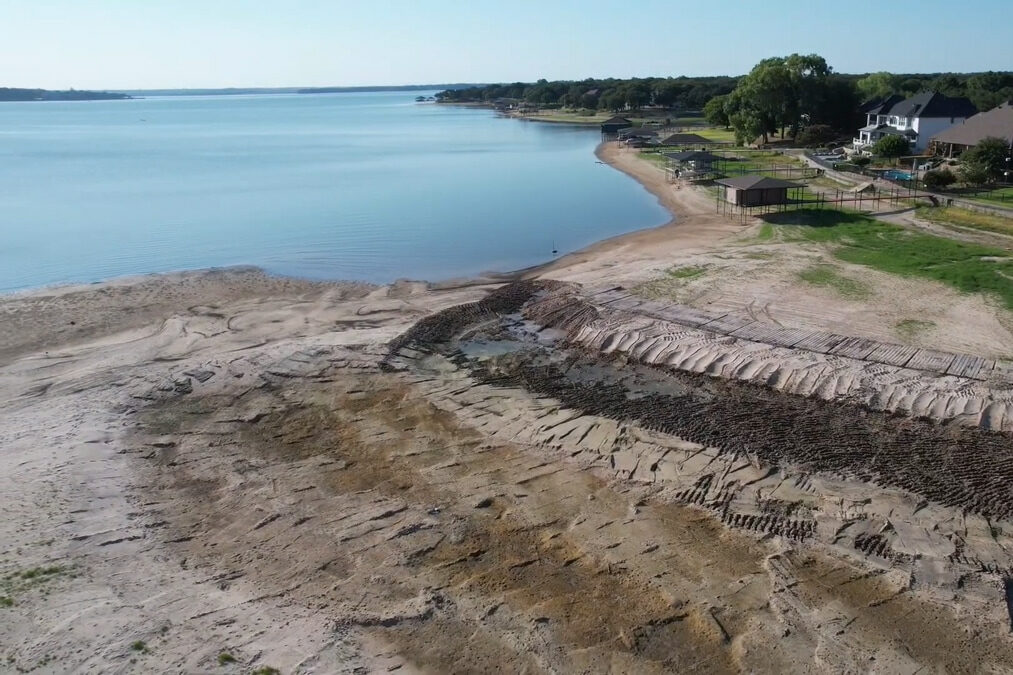
4. Lake Tawakoni – A Tranquil Alligator Oasis
Lake Tawakoni, situated in Texas about 80 miles east of the bustling city life, provides a tranquil oasis for alligators in North Texas. This reservoir on the Brazos River boasts serene surroundings with a touch of nature’s wilderness. It’s estimated that around 400 alligators call Lake Tawakoni their home. The lake’s shallow water coves, protected from wind, create an ideal habitat for these ancient reptiles. As you explore Lake Tawakoni’s peaceful waters for fishing, boating, or simply enjoying the great outdoors, you might come across these fascinating creatures.
Alligator sightings in Lake Tawakoni are relatively common, and while these reptiles may appear imposing, they tend to shy away from human activity. It’s essential for visitors to respect their natural habitat, maintain a safe distance, and avoid any attempts to feed or provoke them. Lake Tawakoni offers a unique opportunity to observe alligators in a serene setting, making it a hidden gem for nature enthusiasts in North Texas. Remember to report alligator sightings to Texas Parks and Wildlife to contribute to the responsible management of this thriving ecosystem.
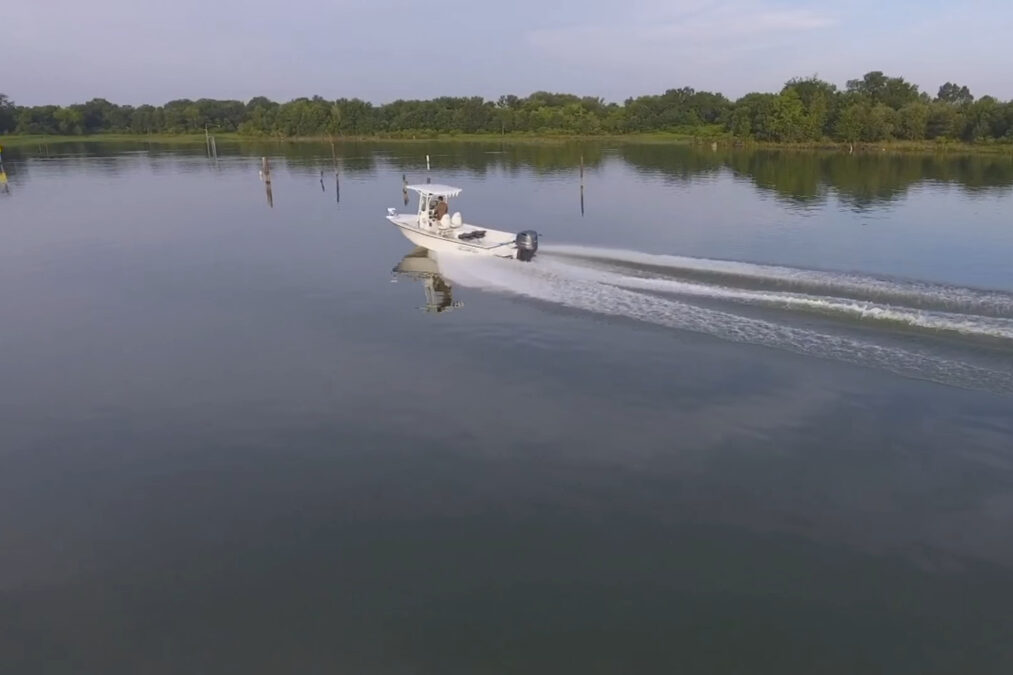
5. Caddo Lake – Marion County’s Alligator Wonderland
Caddo Lake, spanning into Marion County, offers a unique ecosystem with cypress trees, bayous, and abundant wildlife. This natural wonderland is home to a substantial alligator population. With its shallow waters and diverse food sources, Caddo Lake provides an ideal habitat for alligators. Visitors exploring the lake by kayak or boat may encounter these reptiles basking in the sun. While alligators are a fascinating part of Caddo Lake’s ecosystem, it’s crucial to maintain a respectful distance and report sightings to authorities for proper monitoring.
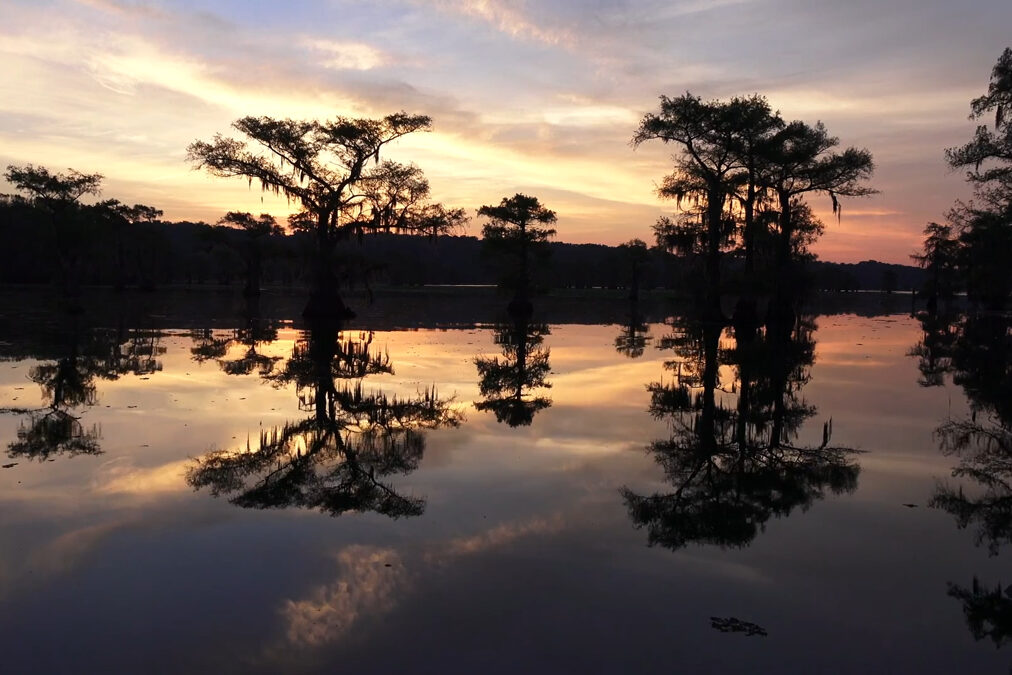
6. Lake Travis – Travis County’s Alligator Mystery
Lake Travis, situated in Travis County, holds a bit of an alligator mystery in North Texas. While not as common as in some other lakes, alligators have been known to inhabit the Colorado River, which feeds into Lake Travis. Despite the lake’s well-developed shorelines, wildlife professionals believe that a few alligators may reside here. Encounters with alligators in Lake Travis are infrequent, but when they occur, they often make headlines. If you happen to spot an alligator in Lake Travis, it’s a rare occurrence worth reporting to Texas Parks and Wildlife.
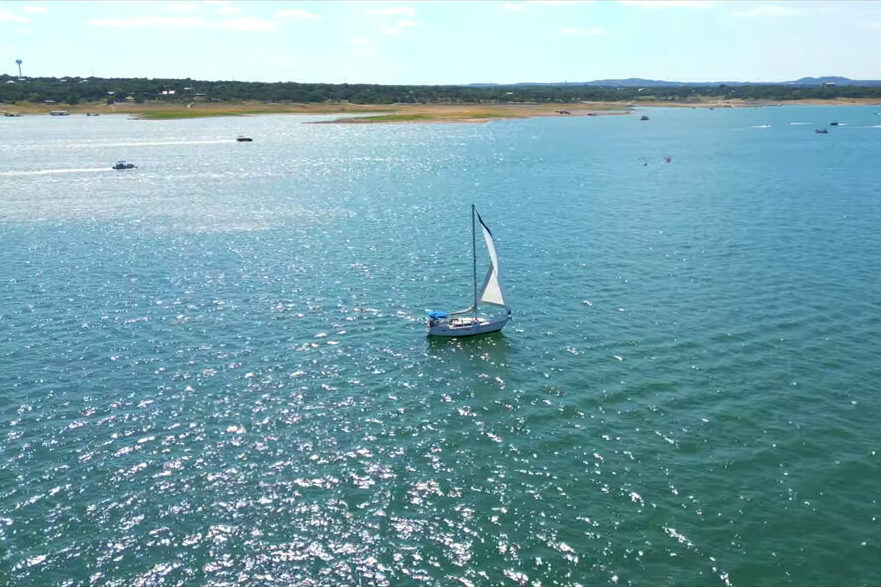
7. Lake Livingston – Polk County’s Alligator Hotspot
Lake Livingston, located in Polk County, is a hotspot for alligators in North Texas. This vast lake is a favorite among anglers and outdoor enthusiasts. Nestled in the region close to Louisiana and the Gulf Coast, Lake Livingston boasts one of the highest alligator populations in Texas. Anglers have reported numerous sightings of large gators over the years. While enjoying the lake’s natural beauty, visitors should remain aware of the presence of alligators, especially in marshy areas. Respect for these creatures and their environment is key to coexisting harmoniously.
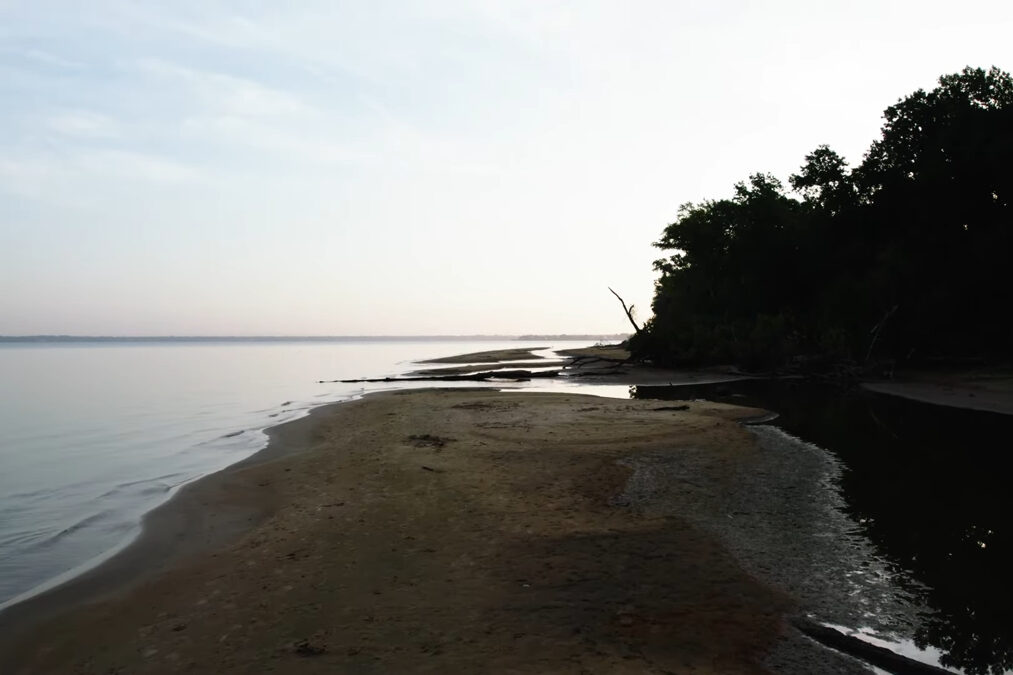
History of Alligators in Texas Lakes
Alligators have been part of Texas’ freshwater ecosystems for centuries, inhabiting its marshes, swamps, rivers, ponds, and lakes. In 2018, the Army Corps of Engineers captured a picture of an alligator at Lake Texoma that proved the legend that alligators existed in the area true. Since then, the high waters due to recent rains have pushed wildlife from their natural habitats into North Texas’ recreational lakes. Sightings of alligators in lakes such as Lake Worth, Lake Lewisville, Eagle Mountain Lake, Caddo Lake, Lake Travis, Lake Livingston, and Lady Bird Lake (also known as Town Lake) have become more common.
Why are there so many alligators in Texas lakes?
Alligators are native to North Texas and live in various freshwater lakes and rivers. The ecoregion and climate of the area dictate their habitat, meaning they prefer shallow waterway runoffs away from the public, as well as the 22 core counties that border Louisiana and Arkansas. As top predators, they play an integral role in the local ecosystem and should not be removed from their natural habitats.
Alligator sightings are not as frequent in North Texas as they are in other parts of the state; however, they are native to the area. This is likely due to their natural habitats being in remote areas away from populated and open areas of famous lakes. In recent years, the alligator population has increased due to people spending more time outdoors and alligators becoming more comfortable living in urban areas.
Additionally, alligators can survive in various climates and temperatures, making them well adapted for the North Texas area. Their ability to retain heat and regulate their body temperatures allows them to survive in the cooler temperatures of North Texas while still taking advantage of the region’s warm temperatures.

What Kinds of Alligators can be found in North Texas Lakes?
The alligators found in Texas lakes are mainly American Alligators (Alligator mississippiensis). These alligators are native to the southeastern region of North America. They can be found in Alabama, Arkansas, the Carolinas, Georgia, Louisiana, Mississippi, and even part of Oklahoma, in addition to the eastern part of Texas. They inhabit freshwater marshes, swamps, ponds, and lakes and favor warm, shallow water for foraging, nesting, and basking.
Adult American alligators typically measure 11 to 15 feet long and are typically dark olive green or black. They have a long, tapered snout and solid and powerful jaws that can crush prey with a force of up to 2,980 newtons. The American alligator can live up to 50 years in the wild and is classified as a Least Concern species by the IUCN.
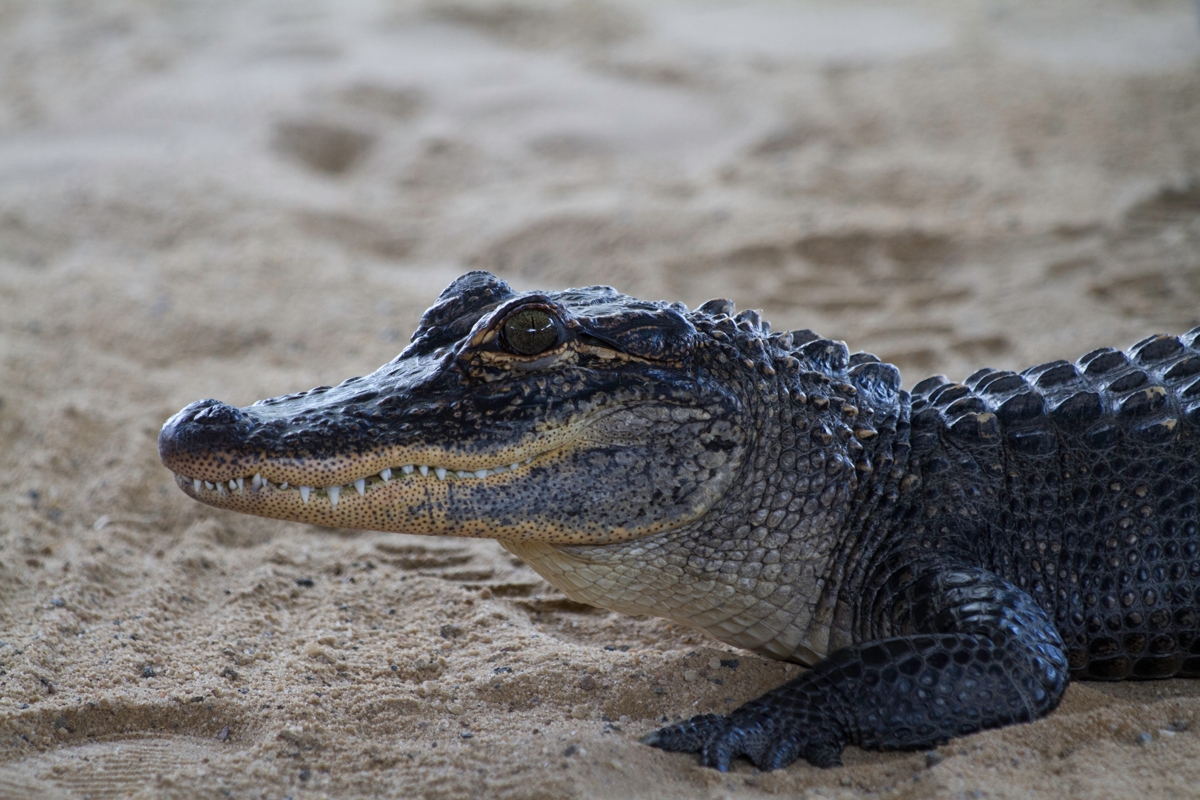
Safety Precautions Around North Texas Alligators
When visiting alligator-infested lakes in North Texas, it’s essential to prioritize safety. Here are some precautions to follow:
- Be aware of lakes known for alligator populations, such as Lake Lewisville, Lake Worth, Eagle Mountain Lake, Caddo Lake, Lake Travis, Lake Livingston, and Lady Bird Lake.
- Avoid approaching the water’s edge when you are near a lake with alligators.
- Refrain from swimming in areas where alligators may be present, and stick to swimming during daylight hours.
- Dispose of fish scraps in a trash can rather than the water to avoid attracting alligators.
- Supervise small children closely in and around the water.
- Do not allow pets to swim, exercise, or drink in waters where alligators may be found.
- Never feed alligators, as this can lead to habituation and potentially dangerous encounters.
- If you encounter an alligator, back away slowly without turning your back on it.
- If an alligator hisses, consider it a warning sign to retreat immediately.
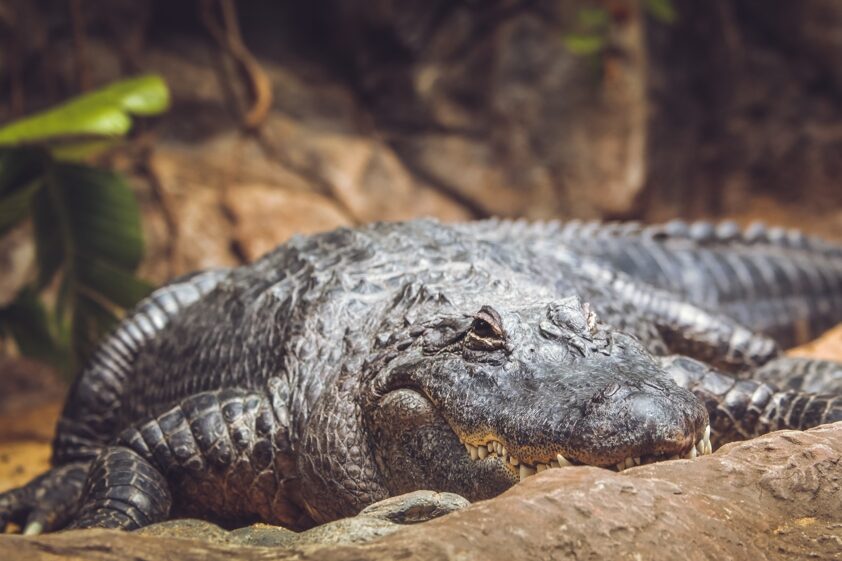
What to Do If You Encounter an Alligator
If you encounter an alligator in one of North Texas’ lakes, follow these steps:
- Stay away from the water’s edge.
- Avoid running; instead, back away slowly.
- Do not feed the alligator or provoke it in any way.
- If you hear an alligator hiss, move away immediately.
- Only swim during daylight hours and avoid water activities in areas with large alligators.
- Closely supervise small children in and around the water.
- Contact the Texas Parks and Wildlife Department’s district office at 817-831-3128 on weekdays or 1-800-792-4263 after hours and on weekends if the alligator poses a threat to human safety.
Where to Report an Alligator Sighting?
If you see an alligator in North Texas, please notify the Texas Parks and Wildlife Department (TPWD). They are in charge of wildlife management and can provide relevant guidance and help. Here’s how to file an alligator sighting report:
Contact the TPWD Wildlife Information Line
The TPWD Wildlife Information Line can be reached at 1-800-792-1112. This queue is open from 8:00 a.m. to 5:00 p.m., Monday through Friday. Inform them of your alligator sighting and offer specifics such as the location, date, and time.
Online Report Submission
You can also submit an online report using the TPWD website. Search for “Alligator Sighting Report” or similar keywords on the TPWD webpage (tpwd.texas.gov). This should take you to the correct page where you can share further information about the sighting.
Contact Regional Law Enforcement
In an imminent danger or emergency, contact your local police enforcement. They might work with the TPWD or other appropriate agencies to guarantee public safety.
Conclusion
Alligators are fascinating and integral to North Texas’ ecosystem. While encountering them in the region’s lakes is not unusual, following safety precautions and respecting their natural habitat ensures a harmonious coexistence between humans and these ancient reptiles. With proper awareness and knowledge, you can enjoy the beauty of North Texas’ alligator-infested lakes while staying safe.
FAQs
Have there been any Alligator attacks in Texas?
Yes, one alligator attack has been reported in Texas. However, alligator attacks are extremely rare in Texas. In the case of an alligator attack, you should fight back as hard as possible and try to get away from the alligator. Also, call 911 immediately! It’s always better to follow the rules around alligator-infested lakes.
Why must alligators be tolerated in North Texas?
Alligators are an integral part of North Texas’s ecosystem and serve a vital role as top predators. As such, alligators should not be removed from their natural habitats in North Texas.
What should lake residents do to avoid confrontations with alligators?
Be aware of the presence of alligators and do not feed them. Do not provoke alligators, and never feed them. Do not let children or pets play close to water, mainly if they are near a body of water with an alligator inhabiting it.
How do you know if an alligator is in a lake?
Alligators are freshwater animals, so they’ll only be in a lake if it is one. If the water level of a lake is low enough that alligators can no longer submerge their heads underwater, they’ll be in a river.
Are there lakes in Texas without alligators?
Yes, there are. The largest lake in Texas is Lake Texoma, which has no alligators and is an artificial lake created by constructing two dams on the Red River.
The alligators in Texas are found mainly on the coast and in East Texas, with a population of about 15,000. The largest lake with alligators in the north Texas area is Lake Tawakoni, which has an estimated 400 alligators. Lake Tawakoni is a reservoir on the Brazos River located about 80 miles east.

